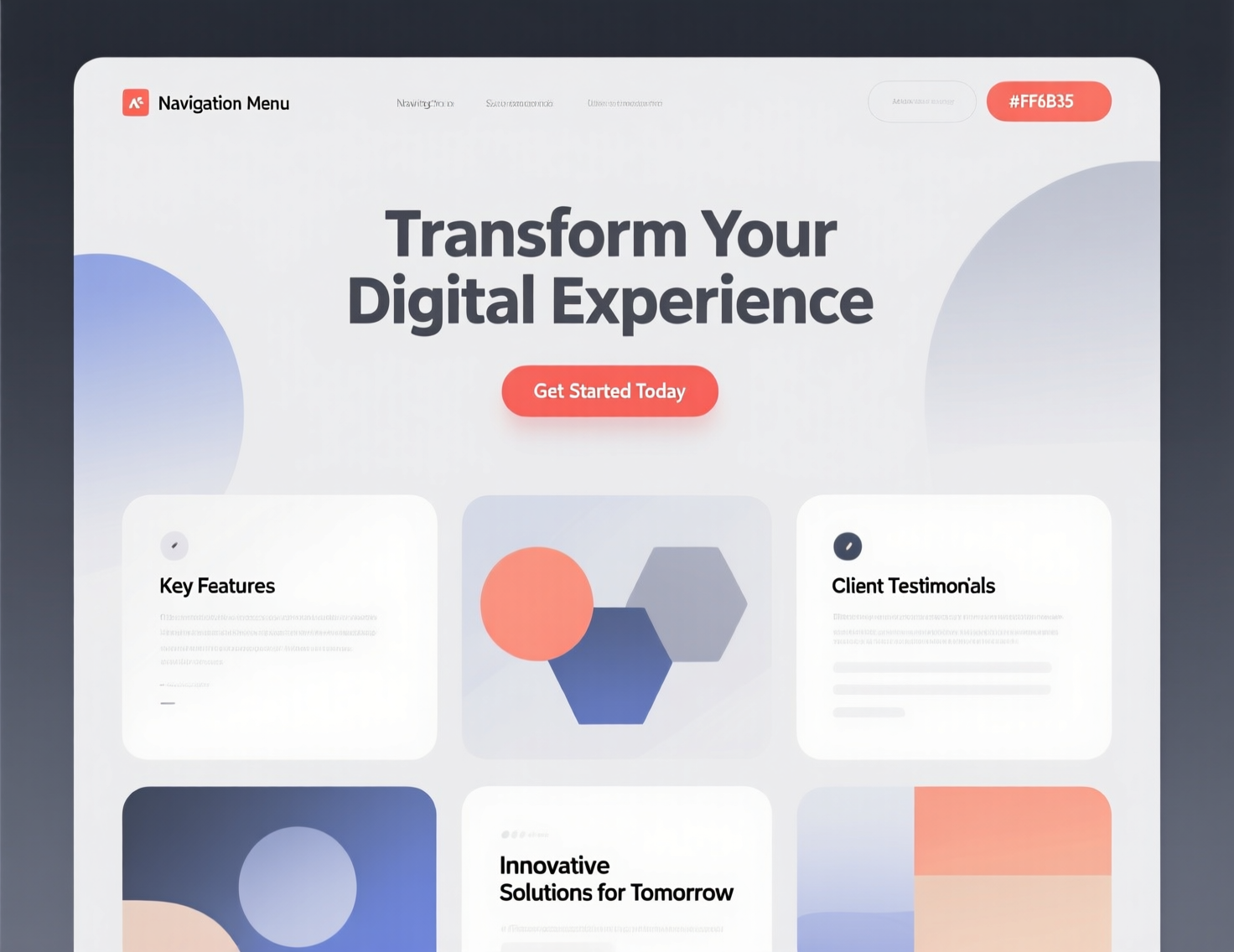Your Homepage Is Killing Your SEO: 10 Fixes That'll Double Your Traffic
Your homepage is more than just a digital storefront—it's your most powerful SEO asset.

As a web solutions and digital marketing agency, we've seen firsthand how strategic homepage design can transform search rankings and drive qualified traffic. Here's how to optimise your homepage for both search engines and users.
Why Homepage SEO Matters for Your Business
Your homepage typically receives the most backlinks and has the highest domain authority of any page on your site. When optimized correctly, it becomes a conversion engine that attracts organic traffic, reduces bounce rates, and establishes credibility with both search engines and visitors.
Search engines prioritize websites that deliver exceptional user experiences. By combining technical SEO with thoughtful design, you create a homepage that ranks well and converts visitors into customers.
1. Master Keyword Research and Strategic Mapping
Effective homepage optimisation starts with understanding what your target audience is searching for. Begin by identifying primary keywords that align with your core services—terms like "web design services," "digital marketing agency," or "custom web development."
Use tools like SEMrush, Ahrefs, or Google Keyword Planner to analyze search volume and competition. Focus on keywords with strong search intent that match your business offerings. Long-tail keywords like "responsive web design for small businesses" often convert better than broad terms because they attract more qualified traffic.
Map your primary keyword to your homepage and supporting keywords to relevant sections. This strategic approach ensures your content aligns with user intent while maintaining natural readability.
2. Optimise Critical On-Page Elements
Your homepage's technical foundation determines how search engines interpret and rank your content. Pay special attention to these essential elements:
Title Tags: Craft compelling titles under 60 characters that include your primary keyword near the beginning. For example: "Web Design & Digital Marketing Solutions | [Your Agency Name]"
Meta Descriptions: Write persuasive summaries up to 160 characters that highlight your unique value proposition. Include a clear call-to-action to improve click-through rates from search results.
Header Tag Hierarchy: Use a single H1 tag for your main headline, H2 tags for major sections, and H3 tags for subsections. This structure helps search engines understand your content organization while improving readability for visitors.
URL Structure: Keep your homepage URL clean and memorable. Ensure all internal pages use descriptive, keyword-rich URLs like "/services/web-design" rather than "/page123."
3. Enhance Images for Speed and Visibility
Images make your homepage visually appealing, but unoptimized images can devastate loading times and SEO performance. Compress all images using tools like TinyPNG or ImageOptim to reduce file sizes without sacrificing quality.
Add descriptive alt text to every image, incorporating relevant keywords naturally. Alt text serves two purposes: it improves accessibility for visually impaired users and helps search engines understand your visual content. For example: "modern responsive website design on multiple devices" is more effective than "image1.jpg."
Consider using next-gen image formats like WebP for even better compression and faster loading times.
4. Prioritise Mobile-First Design
With over 60% of web traffic coming from mobile devices, Google now uses mobile-first indexing—meaning it primarily evaluates the mobile version of your site for ranking purposes. Your homepage must deliver an exceptional mobile experience.
Implement responsive design techniques using CSS frameworks like Bootstrap or flexible grid systems. Ensure buttons are easily tappable, text is readable without zooming, and navigation menus work seamlessly on smaller screens.
Test your homepage using Google's Mobile-Friendly Test tool and PageSpeed Insights to identify and fix mobile usability issues. A mobile-optimised homepage not only ranks better but also significantly reduces bounce rates from mobile visitors.
5. Accelerate Loading Speed
Page speed is a confirmed Google ranking factor and a critical element of user experience. Even a one-second delay in loading time can reduce conversions by 7%. Optimize your homepage speed by:
- Compressing and lazy-loading images
- Minimising HTTP requests by combining CSS and JavaScript files
- Leveraging browser caching to store static resources
- Using a Content Delivery Network (CDN) to serve content faster
- Removing unnecessary third-party scripts and plugins
Use Google PageSpeed Insights, GTmetrix, or Pingdom to measure your current performance and receive specific optimisation recommendations. Aim for loading times under three seconds for optimal results.
6. Design for Exceptional User Experience
Search engines increasingly prioritize websites that keep visitors engaged. Your homepage should guide users intuitively toward their goals with clear navigation, logical content hierarchy, and compelling calls-to-action.
Create a clean, uncluttered layout with plenty of white space. Use visual hierarchy to draw attention to your most important messages and conversion points. Implement breadcrumb navigation to help users understand their location within your site structure.
Ensure your homepage is accessible to all users, including those with disabilities. This not only expands your audience but also aligns with search engine priorities around inclusive web experiences.
7. Build Strategic Internal Linking
Your homepage should serve as a hub that distributes link equity throughout your site. Include contextual links to key service pages, recent blog posts, and important resources. This internal linking structure helps search engines discover and index your content while guiding visitors deeper into your site.
Use descriptive anchor text that clearly indicates the destination page's content. For example, "explore our web development services" is more effective than generic "click here" links.
8. Leverage Schema Markup for Enhanced Visibility
Implement structured data markup (schema.org) on your homepage to help search engines understand your business information. Add Organization schema to display your company name, logo, contact information, and social profiles in search results.
Consider adding additional schema types like LocalBusiness if you serve specific geographic areas, or Service schema to highlight your offerings. This structured data can lead to rich snippets in search results, improving visibility and click-through rates.
9. Monitor Performance with Analytics
Optimisation is an ongoing process that requires regular monitoring and refinement. Set up Google Analytics to track crucial metrics like bounce rate, session duration, pages per session, and conversion rates.
Configure Google Search Console to monitor your homepage's search performance, including impressions, click-through rates, and average position for target keywords. Use these insights to identify opportunities for improvement.
Track engagement metrics to understand how visitors interact with your homepage. High bounce rates or short session durations may indicate issues with content relevance, page speed, or user experience that need addressing.
10. Test, Refine, and Improve Continuously
Use A/B testing to experiment with different homepage variations. Test elements like headline copy, call-to-action placement, color schemes, and content layout to determine what resonates best with your audience.
Keep your homepage content fresh by regularly updating statistics, case studies, and featured projects. Search engines favor websites that demonstrate ongoing activity and relevance.
Review your SEO performance monthly, adjusting your strategy based on data rather than assumptions. Pay attention to algorithm updates and evolving best practices to maintain your competitive edge.
Ready to Transform Your Homepage?
Optimizing your homepage for search engines doesn't mean sacrificing design quality or user experience. The most effective homepages seamlessly blend SEO best practices with compelling design and clear messaging.
As a web solutions and digital marketing agency, we specialize in creating homepages that rank well and convert visitors into customers. By implementing these proven strategies, you'll build a strong foundation for sustainable organic growth and improved search visibility.
Start with the fundamentals—keyword research, on-page optimization, and mobile responsiveness—then progressively enhance your homepage with advanced techniques like schema markup and strategic testing. The investment in homepage SEO pays dividends through increased traffic, better lead quality, and higher conversion rates.














